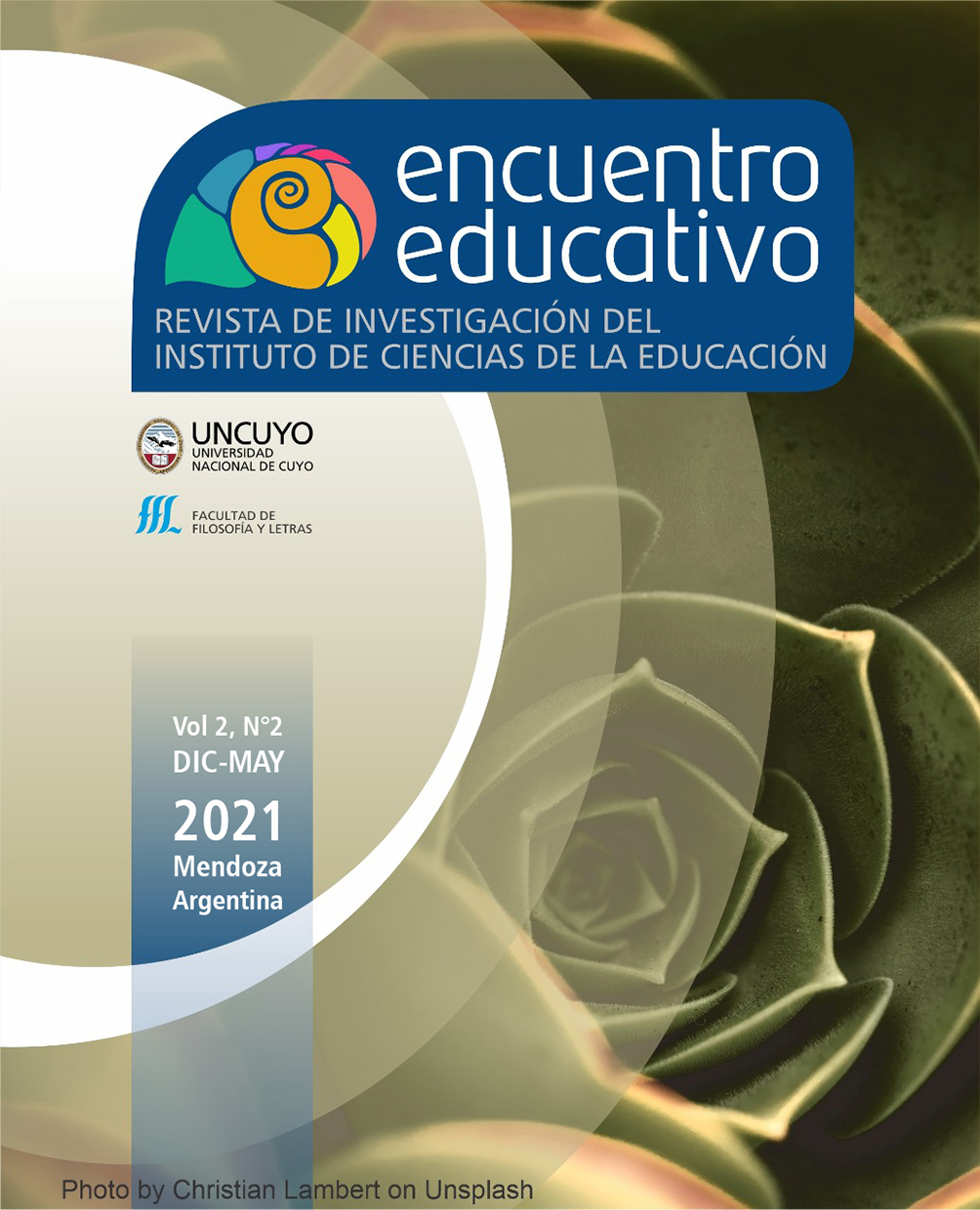Social representations that students that are about to graduate have from the Faculty of Medical Sciences and Faculty of Dentistry (UNR) about the future professional field
Keywords:
social representations, communicative act, university students, professional fieldAbstract
The current presentation comes from a final work of a thesis to acquire a Magister in University Education degree (UNR), which was investigated, from the voices of
the students that were about to graduate from the Faculty of Medical Sciences and Dentistry, UNR, which were the social representations about their future professional field and the connection with the community. Based on the initial assumptions that guided the process of investigation, an interpretive paradigm was selected, qualitative, naturalistic and humanistic, a choice that allowed the construction of categories due to the prevalence of data resulting from the speech of 150 students close to graduation. Their analysis and interpretation, based on the contrasting of similarities and differences between the different groups, allowed us to understand the representations that they conceived throughout their academic training in relation to the future professional work. We began with a trace through curriculum designs and the history of the four majors. An
anonymous questionnaire was disposed and applied and, in order to enrich and /or clarify the information of such instrument, the semi-structured interview was
utilized, organizing focus groups in the form of workshops, in each academic unit.
Within the dynamic of representations in the speeches, identities, belonging and construction of a future professional field were expressed, expectations were
invoked, insecurities in relation to professional recognition-valuation, they projected their compromise in the social service oriented towards the search for a better quality of life with all that it implies. Likewise, they expressed the need for constant updating for the responsible and ethical exercise in addressing the human being as a bio-psycho-social unit. Thus, through the communicative act, we
attempted to interpret the internalization of values, norms, expectations, interests, ways of living and action, socially preformed, assumed uncritically and unconsciously in the professional training processes and in their exercise.
References
ABONIZIO, M. (2005). Actos de significado: la problemática de las adicciones en el ámbito de la Secretaría de Salud Pública Municipal: una mirada desde la perspectiva de los profesionales de los servicios de salud. Tesis Doctoral sin publicar, Doctorado en Psicología, UNR.
BOURDIEU, P. (1985). ¿Qué significa hablar? Economía de los intercambios lingüísticos. Akal.
BOURDIEU, P. (1990). Sociología y cultura. Consejo Nacional para la Cultura y las Artes.
BOURDIEU, P. (1997). Espacio social y campo de poder. Anagrama.
BRUNER, J. (1988). Realidad mental y mundos posibles. Gedisa.
CAPRIA, F. (2007). Representaciones Sociales que tienen los estudiantes de 5° año de la licenciatura en Fonoudiología sobre el futuro campo profesional en una Universidad pública. Tesina para acceder al Título de Licenciada en Fonoaudiología. Escuela de Fonoaudiología, Facultad de Ciencias Médicas, UNR: Rosario.
CAPRIA, F. (2017). Representaciones Sociales que tienen los estudiantes próximos a egresar de la Facultad de Ciencias Médicas y Facultad de Odontología (UNR) acerca del futuro campo profesional. Tesis para acceder al Título de Magister en Educación Universitaria. Facultad de Humanidades y Artes, UNR: Rosario.
CAPRIA, F. (2021). Parte VIII. En Fonoaudiología Intervenciones y prácticas posibles. La Fonoaudiología en el contexto de la investigación científica. Escuela de Fonoaudiología, la Facultad de Ciencias Médicas, UNR: Rosario.
CASTORIADIS, C. (1988). Los dominios del hombre. Las encrucijadas del laberinto. Gedisa.
FARR, R. (1986). Las representaciones sociales en Psicología Social II. Paidós.
FREIRE, P. (2008). Pedagogía del oprimido. Siglo XXI Editores.
GIDDENS, A. (1995). Modernidad e identidad del yo. El yo y la sociedad en la época contemporánea. Península.
HAMMERSLEY, M. y ATKINSON, P. (1994). Etnografía. Métodos de Investigación. Paidós.
JODELET, D. (1984). “La representación social: fenómenos, conceptos y teoría”. En Serge Moscovici Psicología social II. Pensamiento y vida social. Psicología social y problemas sociales. Paidós.
MASLOW, A. (1943). A theory of Human Motivation. Classics in the History of Psychology. http://psychclassics.yorku.ca/Maslow/motivation.htm
MOSCOVICI, S. (1979). El psicoanálisis, su imagen y su público. Huemul.
MOSCOVICI, S. (1984). Introducción al campo de la Psicología Social. En S. Moscovici. Psicología Social I. Paidós.
MOSCOVICI, S. (1986). La representación social: fenómenos concepto teoría en Psicología Social II. Pensamiento y vida social. Psicología social y problemas sociales. MIMEO.
PICHON-RIVIÈRE, E. Y PAMPLIEGA DE QUIROGA, A. (1985). Psicología de la vida cotidiana. Nueva Visión.
ROBLEDO, J.M. (1994). La imagen y el discurso social en torno al SIDA. Estrategias globales de comunicación alternativa y diseño de productos específicos para crear conciencia e intervenir socialmente. Tesis Postgrado sin publicar, Facultad de Ciencias de la Información, Universidad Complutense: España.
UNESCO (1980). Déclin et transformation des universités. Perspective ,2, UNESCO: París.
VAN DIJK, T. (1990). La noticia como discurso. Comprensión, estructura y producción de la información. Paidós


















